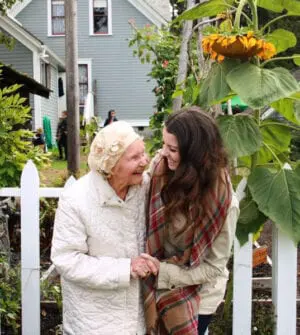Managing the growing population of elderly patients with dementia in Canada is one of the biggest challenges currently facing our health services. The Alzheimer Society estimates that one in twenty people over the age of 65, and as many as one in four of those over 85, suffer from some form of dementia.
With that in mind, healthcare officials are constantly looking at new approaches to give these patients the best possible care. One novel idea which has been gaining traction recently is the development of facilities modeled on Hogeway, an innovative ‘dementia village’ in the Netherlands, which gives patients the illusion of living in a fully functional town, while providing them with supervised, 24-hour care.
For gerontology program students, Hogeway is a fascinating case study, which has attracted both praise and criticism from gerontology professionals since first opening in 1992.
A New ‘Reality’ for Gerontology Training Graduates? A Tour Of Hogeway
Hogeway comprises twenty-three houses set around a central village complete with a town square, supermarket, restaurant, and theatre. Seven residents live in each house, and are arranged in different ‘lifestyle settings,’ designed to replicate their previous home lives, such as an aristocratic setting with luxuriously decorated apartments and fine dining, while there are also options for craftspeople ,arts enthusiasts and others.
Residents are free to stroll around town, even at night, and are encouraged to perform daily tasks like shopping and cooking with caregivers accompanying them. 250 staff members are employed to provide round-the-clock security, and students enrolled in a therapeutic recreation program will be pleased to know there are plenty of opportunities for activity, with bike rides, fairs and day-trips organized.
Ethics In Gerontology Training: Advantages & Criticisms of Dementia Villages
The Hogeway model has been shown to have numerous benefits to its residents, who remain active longer, eat better and require less medication than patients in traditional dementia care facilities. However, many have raised ethical concerns about constructing what amounts to an ‘alternate reality’ for dementia sufferers, believing it is dishonest to patients, with some even likening it to ‘The Truman Show’.
Hogeway have defended the model, insisting that it is effectively a real village managed by people trained in dementia care. Furthermore, as students in gerontology courses learn, dementia sufferers often quickly forget what they have been told due to the nature of their disease, and repeatedly reminding them can cause needless distress.
The Future Of Gerontology Training: Bringing the Hogeway System To Canada
The idea of implementing facilities like Hogeway in Canada poses many challenges. Funding for the project required around $25 million from the Dutch government, and requires more staff than traditional facilities.
Nonetheless, students undergoing gerontology training could at least see some elements of the idea in their future careers. A smaller-scale version of the idea was recently introduced at the Georgian Bay Retirement Home in Ontario, where a section was designed to resemble houses from the 1950’s, and doors are made to look like bookshelves to ensure patients don’t stray.
Interested in finding out more about new developments in gerontology?
Visit Stenberg for more information about our courses!










